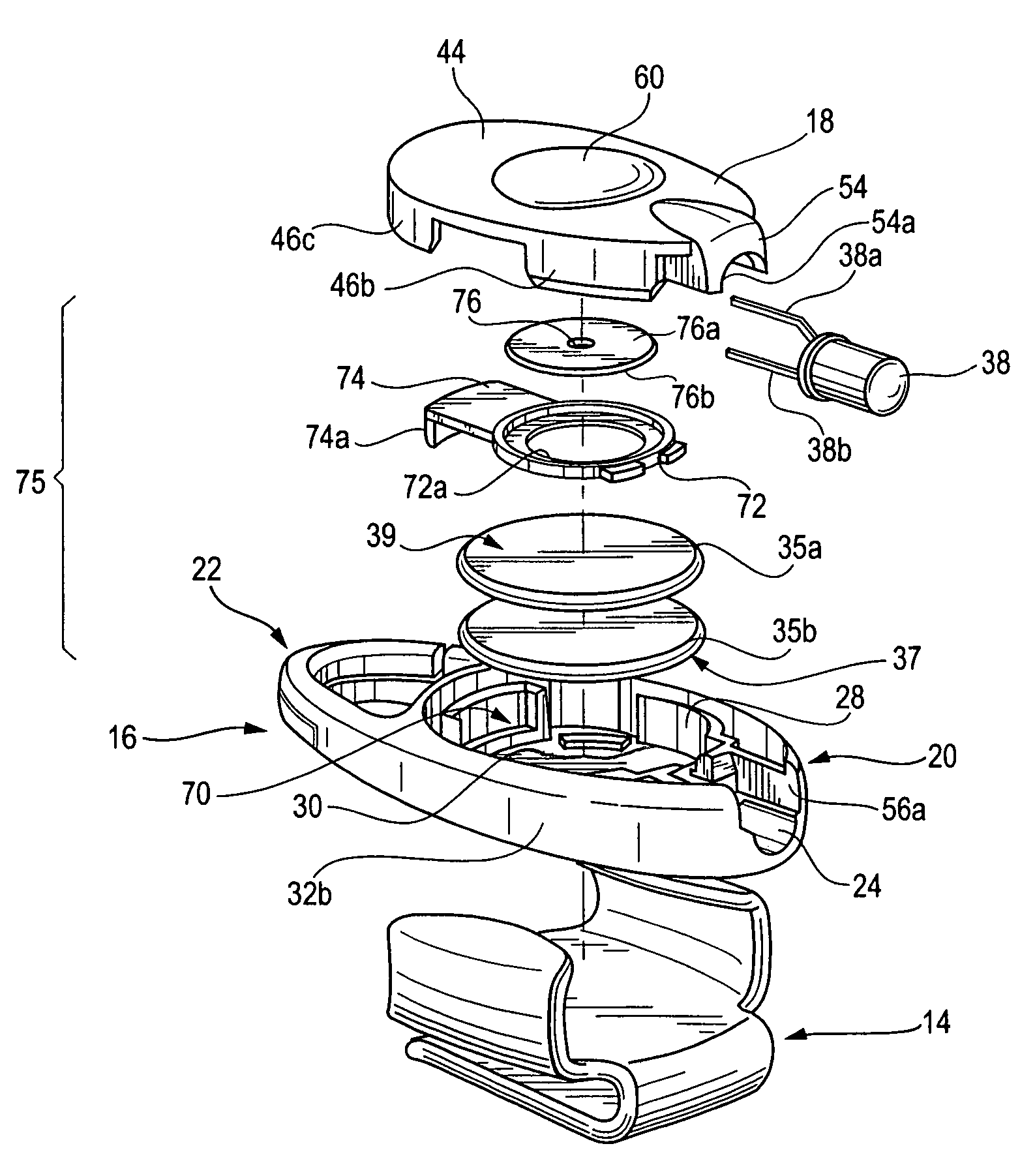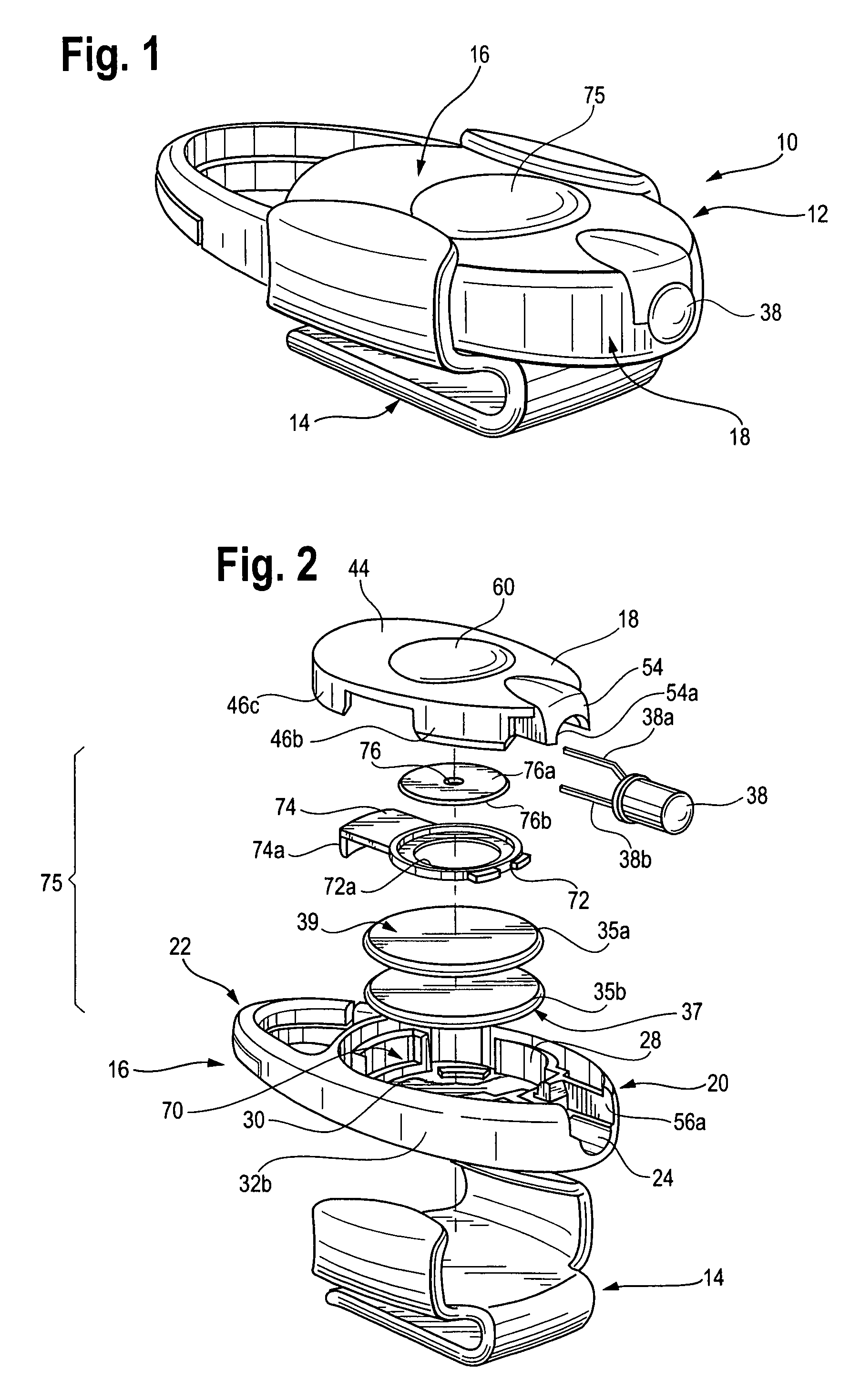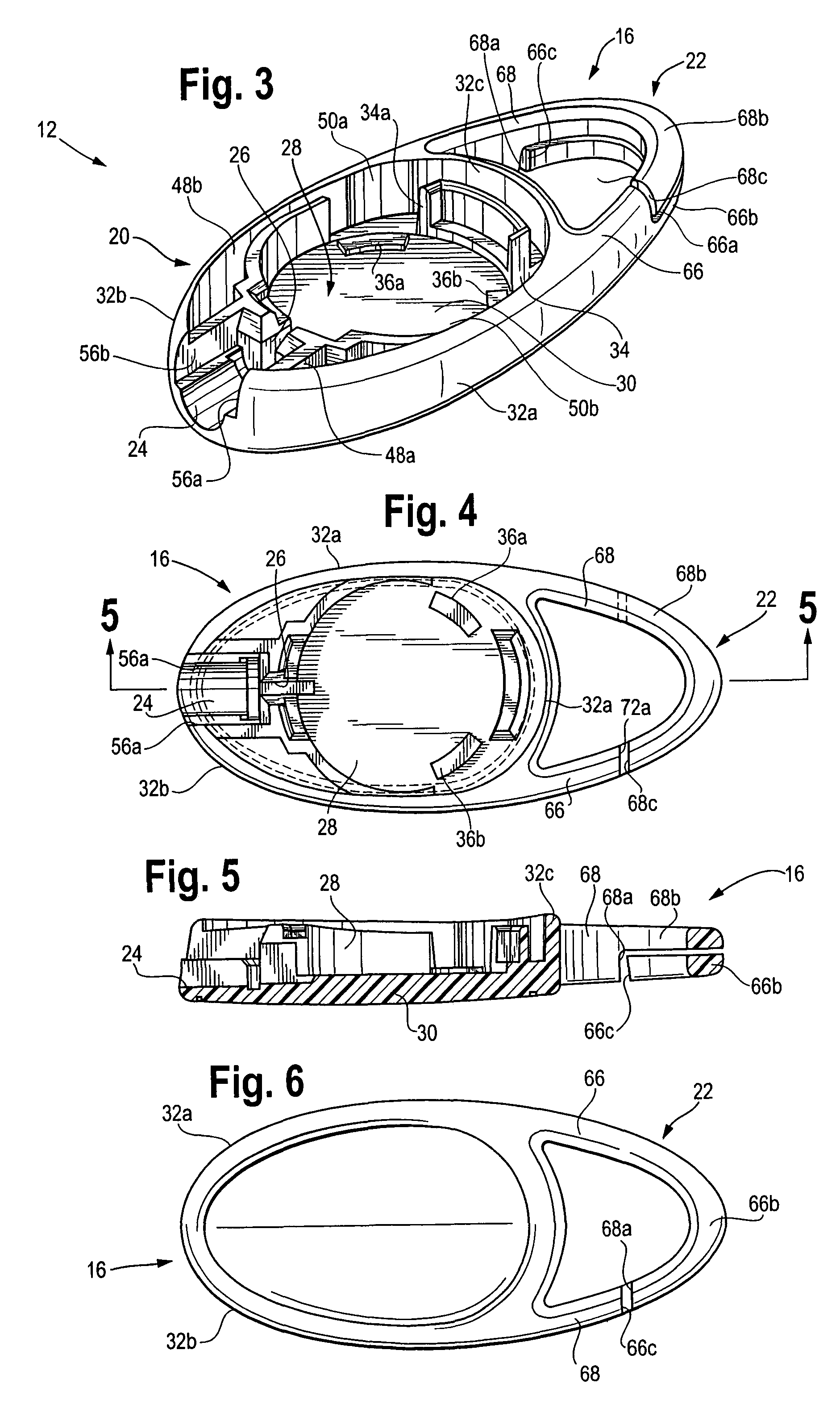Miniature LED flashlight with snap-on carrier
a flashlight and snap-on technology, applied in the field of mini-flashlights, can solve the problems of reducing the mobility required of law enforcement personnel, difficult and cumbersome for law enforcement personnel to carry, and the flashlight of this type is often bulky and cumbersom
- Summary
- Abstract
- Description
- Claims
- Application Information
AI Technical Summary
Benefits of technology
Problems solved by technology
Method used
Image
Examples
Embodiment Construction
[0031]Referring now to the FIGS. 1 and 2, a miniature flashlight assembly 10 is shown for attachment to a support, such as an article of clothing or baggage, constructed in accordance with the principles of the present invention. The flashlight assembly 10 includes a miniature flashlight 12 and a mating flashlight case or carrier 14. Attaching the flashlight 12 and case 14 to a support, such as a user's hat brim, allows direction of a light beam toward a specific location, leaving both of the user's hands free for other uses. Preferably, the flashlight 12 has an overall longitudinal length of approximately 2 inches, a traverse width of approximately 0.95–1.0 inch, and a maximum transverse thickness of approximately ⅜ inch. The flashlight 12 preferably uses a light emitting diode (LED) 38 as a light source and a pair of coin-type 3-volt batteries 35a and 35b as a power source. A momentary contact switch 75, to be described, preferably activates the LED.
[0032]The flashlight 12 is adap...
PUM
 Login to View More
Login to View More Abstract
Description
Claims
Application Information
 Login to View More
Login to View More - R&D
- Intellectual Property
- Life Sciences
- Materials
- Tech Scout
- Unparalleled Data Quality
- Higher Quality Content
- 60% Fewer Hallucinations
Browse by: Latest US Patents, China's latest patents, Technical Efficacy Thesaurus, Application Domain, Technology Topic, Popular Technical Reports.
© 2025 PatSnap. All rights reserved.Legal|Privacy policy|Modern Slavery Act Transparency Statement|Sitemap|About US| Contact US: help@patsnap.com



